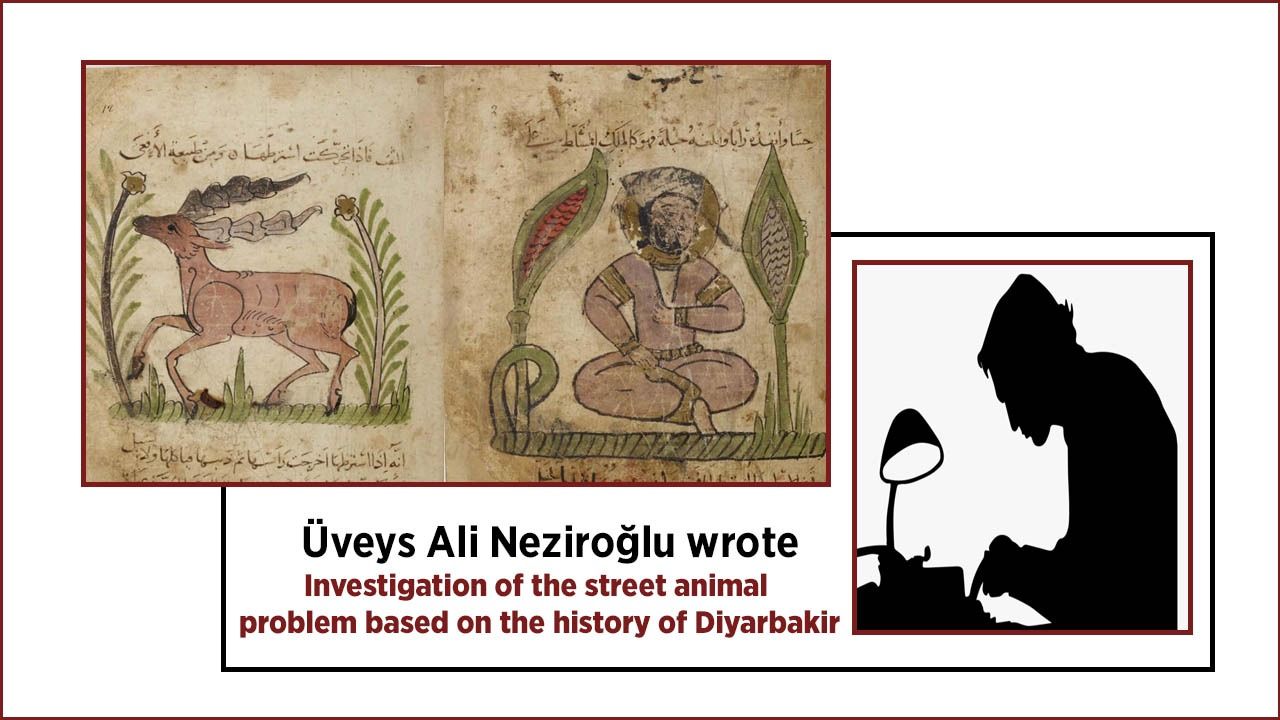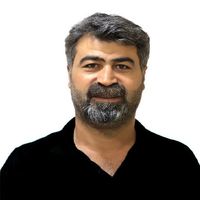When incidents were reported to Nasrü'd-devle that had a negative impact on the city’s natural environment, he ordered the immediate opening of grain stores. Wheat, barley and millet were to be stored on the surrounding hills for birds and poultry, while the streets of the city were to be filled with hay, straw and various feeds for other animals, among other things.
The year is 1058 and we are in what was then Meyâfarkin, now the Silvan district of Diyarbakir. In administrative terms, it was not a district, but a capital. A year earlier, the city had just survived a severe famine and was under the rule of the powerful Kurdish Mervani ruler Nasrü’d-devle Ahmed b. Mervân b. Dûstek (d. 1061). It was February.
That year, more snow than usual fell on the champagne-coloured stones of Meyâfarkin. However, this snow was not white, but red. The palace residents and the people in the neighbourhood were very surprised when they saw red snow for the first time. Not only were the people concerned about this unusual natural phenomenon, the animals were also worried.

The snow had led the palace inhabitants to expect a normal day after they had gone to sleep the night before. Everyone had been dreaming in their mother tongue and was eagerly awaiting the new beautiful day. After all, the palace was a place of multilingual and multicultural life.
Both in the palace and in the capital, there was a rich presence of ethnic and religious diversity, from Armenians to Jews, from Syrians to Arabs, in the name of brotherhood and power. Such a climate of linguistic and religious tolerance was rare in the Muslim world.

As for environmental policy, the discussions took place in the shade of newly planted fruit trees brought from Baghdad and planted on the outskirts of the city. The restoration of the inner and outer city walls was postponed until spring, and the project was to continue with meticulous work without the need for an administrator.
But the red snow seemed to have settled like a curator over the colourful climate of the palace. While the model implemented in the capital and the entire region worked in temperatures that would make today’s idealism envious, the red flakes that fell from the sky suddenly took over the entire social, political and ecological life.

Years earlier, at the invitation of the then crown prince Nasrü’d-devle, a foreign doctor had been brought to the capital from Baghdad. His name was Cebrâil. Cebrâil bin Bahtîşu (d. 1006) was a famous physician from the Syrian Bahtîşu family, the pioneers of the Jundishapur School of Medicine. He was assisted by his son Ebû Said Ibn Bahtîşu, who was also an outstanding physician. The Bahtîşu family had settled in Meyâfarkin through the generous invitation of Nasrü’d-devle.
However, Bahtîşu’s colleagues in Baghdad had not broken off their relationship with the Syrian physician Ibn Butlân (d. 1066); they had even invited him to Meyâfarkin for a short time. Thanks to the medical training he received from his father Cebrâil and his friend Ibn Butlân, Ebû Said Ibn Bahtîşu had become an experienced physician. Alongside the founder of the Bimaristan (hospital) of Meyâfarkin, the Syrian Ebû Said Mensur b. İsa, had risen to become the chief physician of the Mervani Palace. He was also known as a prolific author in the fields of medicine, philosophy and theology under the patronage of Nasrü’d-devle.

That winter, the state officials first asked him about the meaning of the red snow. He did give an answer, but there was a more urgent and important question concerning the population and the animals. Nasrü’d-devle, who was responsible for improving the living conditions of the people in the country, urgently needed to protect the nature of his land. The wild animals, startled by the unusual snow, had descended from the mountains and the countryside into the city. In addition to domestic and farm animals, many chickens had also fallen victim to the wrath of the wild animals. Both domestic and wild animals were in danger.
Part of the population fought against the wild animals and killed them mercilessly, while the merciful fought throughout the winter to care for the wild animals as well. When Nasrü'd-devle learnt of these events affecting the city’s natural environment, the ruler immediately ordered the grain stores to be opened. Wheat, barley and millet were to be stored on the surrounding hills for birds and chickens, while the streets of the city were to be filled with hay, straw and various feedstuffs for other animals, among other things.

Thanks to the ruler’s wise and merciful measure, many animals were saved from death that year. Both the people and the animals were happy about the ruler’s decision. Nasrü’d-devle continued this practise every winter until his death.

With the melting of the red snow, spring arrived in the land. One morning, Ibn Bahtîşu, who knew the Mervani ruler Nasrü’d-devle’s interest in and sensitivity to animals, found himself in the presence of the ruler. The ruler asked Bahtîşu to write a work on zoology. He wrote not one, but two works. One was entitled "The Nature, Characteristics and Utility of Animals" (Tabâiu’l-hayavan ve havâssihâ ve menâfiu a‘zâihâ), the other "The Utility of Animals" (Menâfiu’l-hayvan), both written in Arabic and decorated with illustrated and descriptive animal motifs.
In the preface of the first work, Ibn Bahtîşu mentioned Nasrü’d-devle’s compassion for wild animals with all his affectionate titles and wrote about the reason and method of writing the work: “Emir Nasrüd-devle asked me to write a treatise on the temperament, utility, anatomy and behaviour of animals, including domestic and wild animals, reptiles and aquatic and terrestrial animals. He asked me to classify and describe them according to their characteristics. I complied with his request and wrote this work.”

Although Ibn Bahtîşu’s works were kept for many years in the libraries of churches such as Deyr İbad and Deyr Tuma in Meyâfarkin, they were eventually forgotten. However, history has smiled upon Diyarbakir and these ancient works, which characterise the city’s sensitivity towards animals, have finally been rediscovered.

In today’s debates on street dogs, Diyarbakir’s representatives once again preferred to shout and protest in their usual manner in the commissions dealing with street animals. Had these representatives read Ibn Ezrak’s History of the Mervanids before invoking the Auschwitz quote, Steinbeck’s Buck, Jack London’s White Fang, Kemal Varol’s Mikasa or Idris Baluken’s Oko, they might have had the opportunity to put up a more historically informed resistance in the aforementioned commissions.



